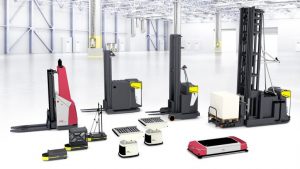You’ve stared at the screen for hours, cycling through the same predictable domain ideas. Nothing stands out. But what if free tools could transform those uninspired concepts into memorable brand assets? Today’s domain generators leverage AI and creative algorithms to suggest combinations you’d never imagine on your own. They blend keywords, industry terms, and innovative word pairings to craft digital identities that resonate with your audience. The difference between blending into the noise and commanding attention often comes down to the right domain—and the right tools to find it.
Breaking the Domain Name Block: Top Free Generators to Kickstart Your Creativity
Ever stared at your screen, desperately trying to conjure the perfect domain name while the cursor blinks mockingly back at you? That creative block ends now. Free domain name generators can transform your basic concepts into brand-worthy web addresses.
Tools like Nameboy, Shopify’s Business Name Generator, and DomainWheel analyze your keywords and instantly produce dozens of available domain name ideas at https://www.active-domain.com/name-generator/. They’ll combine your terms with prefixes, suffixes, and relevant industry words to create options you hadn’t considered.
Don’t settle for uninspired .com leftovers when these powerful generators can unlock creative possibilities in seconds.
Beyond the Obvious: How AI-Powered Naming Tools Uncover Hidden Gems
While traditional domain generators offer solid suggestions, AI-powered naming tools dive deeper into linguistic patterns to uncover truly unique opportunities. These sophisticated systems analyze semantic relationships, trending keywords, and brand positioning to reveal domains you’d never discover manually.
You’ll find AI tools excel at creating meaningful word combinations that resonate with your target audience. They’ll suggest available domains that align perfectly with your brand essence while maintaining SEO viability.
Don’t settle for obvious, overcrowded domain choices when AI can identify hidden gems that competitors haven’t claimed. The right AI naming tool doesn’t just find available domains—it uncovers brandable assets that communicate your unique value proposition instantly.
From Generic to Magnetic: Strategies for Evaluating Domain Name Suggestions
Once you’ve generated a list of potential domain names, you’ll need a systematic approach to separate the truly magnetic options from merely generic alternatives. Start by evaluating memorability—can visitors easily recall your domain after hearing it once? Then assess brand alignment—does it capture your unique value proposition?
Test each candidate for pronunciation clarity, avoiding hyphens and numbers that create confusion. Consider competitive distinction by searching if similar domains exist in your niche. Finally, examine growth potential—will this domain still represent your brand in five years?
The strongest domains aren’t just available; they’re strategic assets that magnetize visitors and amplify your brand message.
Securing Your Digital Identity: Free Resources for Domain Availability and Brand Protection
After identifying your ideal domain name candidates, you’ll need powerful tools to verify their availability and protect your digital identity from potential infringement.
Start with ICANN’s free WHOIS lookup to check domain registration status. Namecheckr.com helps you scan social media platforms simultaneously, ensuring consistent branding across channels. For trademark conflicts, the USPTO’s TESS database offers free searches before you commit.
Don’t overlook DomainTools’ free reputation check to verify your potential domain isn’t blacklisted. Lastly, Google Alerts can monitor mentions of your brand name, giving you early warning of potential infringement issues.
These free resources safeguard your digital identity while maximizing your brand’s impact.
 We are one of the Top website Design Companies in the world because of our research in the field as we are always finding new ways of enriching our client’s requirements with state of the art technology.
We are one of the Top website Design Companies in the world because of our research in the field as we are always finding new ways of enriching our client’s requirements with state of the art technology. his immense growth can be credited to our extremely talented team of 122 in-house web designers/web developers who help us serve a wide array of clients ranging from small enterprises to large corporate houses across the globe. As one of the leading Web Design companies based in Bangalore we are proud to announce that we have successfully completed more than 1350 websites of which more than 650 of them were for our Global Clients, We are one of Best Web Designing Company for providing quality service.
his immense growth can be credited to our extremely talented team of 122 in-house web designers/web developers who help us serve a wide array of clients ranging from small enterprises to large corporate houses across the globe. As one of the leading Web Design companies based in Bangalore we are proud to announce that we have successfully completed more than 1350 websites of which more than 650 of them were for our Global Clients, We are one of Best Web Designing Company for providing quality service. maneuvering through a complex maze. You’ll quickly discover that each country’s requirements and regulations differ significantly, from simple open registrations to strict local presence rules. While you might be familiar with common extensions like .com or .net, country-specific domains such as .uk, .de, or .jp can offer unique advantages for targeting specific markets and boosting local credibility. Understanding these nuances and knowing exactly what documentation you’ll need before starting the process will save you considerable time and potential frustration.
maneuvering through a complex maze. You’ll quickly discover that each country’s requirements and regulations differ significantly, from simple open registrations to strict local presence rules. While you might be familiar with common extensions like .com or .net, country-specific domains such as .uk, .de, or .jp can offer unique advantages for targeting specific markets and boosting local credibility. Understanding these nuances and knowing exactly what documentation you’ll need before starting the process will save you considerable time and potential frustration.

